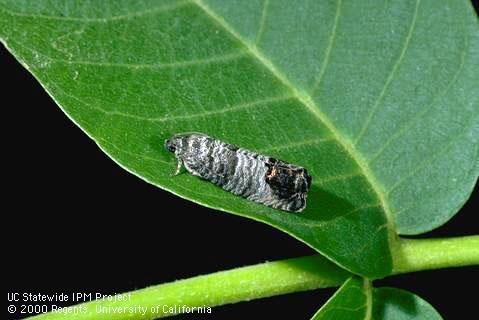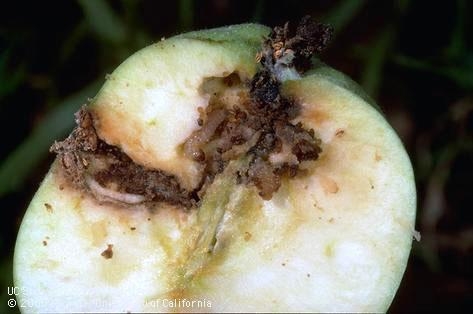Advice for the Home Gardener from the Help Desk of the
UC Master Gardener Program of Contra Costa County
Client's Request (via phone message) Last year my apple tree was seriously impacted by codling moths. I understand that there are routines timed to the hatching of the moth that a home gardener can follow to minimize, maybe even eliminate, damage to the apples. Can you advise me on those routines.
MG Help Desk Response: Thank you for your call to the UC Master Gardener Program Help Desk. Your message indicated you are looking for information on the hatching timing for codling moths in your area.

In cooler areas (e.g., west Contra Costa County), look for first stings in early to mid-May and stings from a second generation mid-July to mid-August. In warmer areas (inland Contra Costa County) start looking for first stings by mid-April. Inland, there may be as many as 3 generations hatching through the summer, all requiring treatment.

To use the calculator, you will need to know the date of when moths are found in your traps and sunset temperatures have reached 62 degrees. This date is known as the biofix date. When asked to select a UC CIMIS weather station, choose the one of five in Contra Costa County that is closest to you. That will produce a chart with expected degree days for the time period you specified and recommendations for degree-day accumulations for each spraying.
For more information on codling moths and their control, see this UC document: http://ipm.ucanr.edu/PMG/PESTNOTES/pn7412.html. For a calendar of gardening operations for apples: http://homeorchard.ucanr.edu/Fruits_&_Nuts/Apple/.
Please let us know if you have further questions.
Help Desk of the UC Master Gardener Program of Contra Costa County (SEH)
Don't miss our 2017 Great Tomato Plant Sale:
http://ccmg.ucanr.edu/EdibleGardening/GreatTomatoPlantSale/
Note: The UC Master Gardeners Program of Contra Costa's Help Desk is available year-round to answer your gardening questions. Except for a few holidays, we're open every week, Monday through Thursday for walk-ins from 9:00 am to Noon at 75 Santa Barbara Road, 2d Floor, Pleasant Hill, CA 94523. We can also be reached via telephone: (925) 646-6586, email: ccmg@ucanr.edu, or on the web at http://ccmg.ucanr.edu/Ask_Us/ MGCC Blogs can be found at http://ccmg.ucanr.edu/HortCoCo/ You can also subscribe to the Blog (//ucanr.edu/blogs/CCMGBlog/).